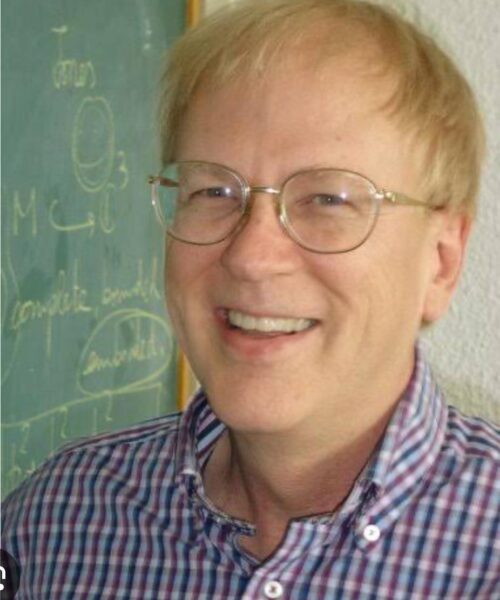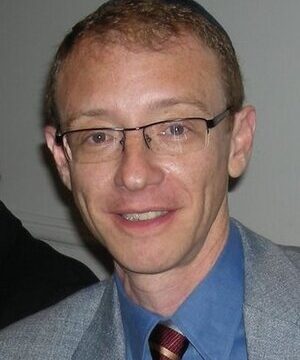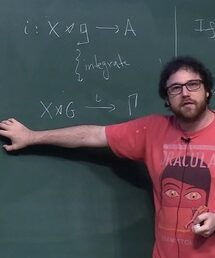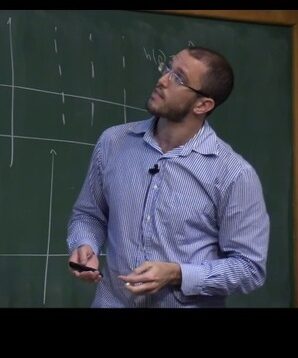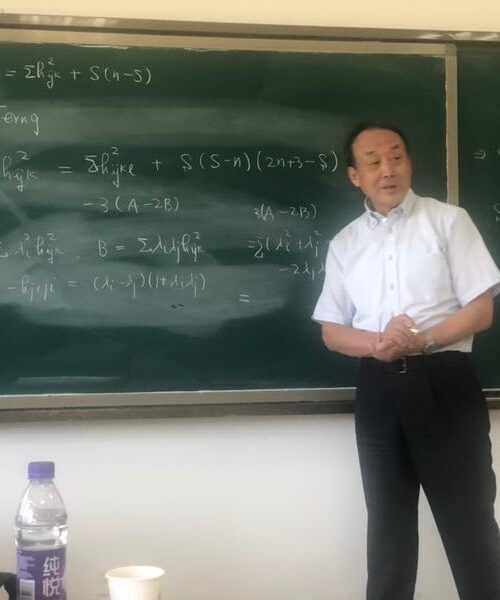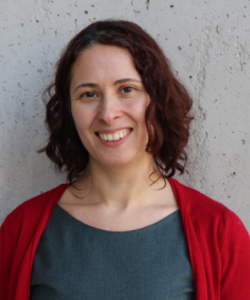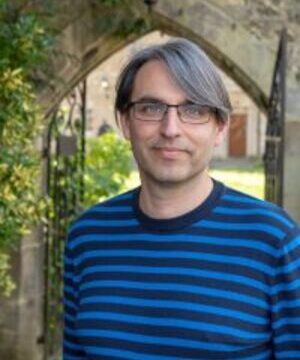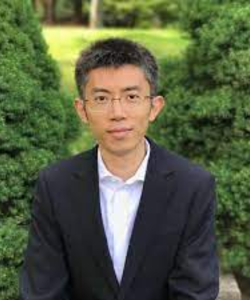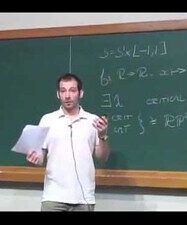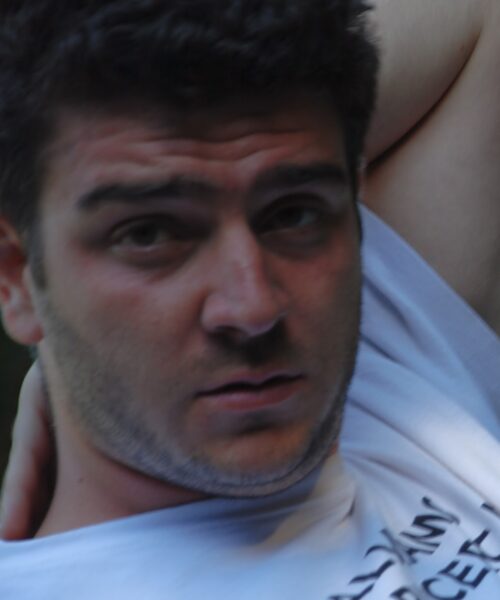Plenaries Information
Speaker: Giovanni Catino
Title: Rigidity results for stable minimal hypersurfaces and critical metrics
Abstract: In this talk I will describe some recent results concerning the rigidity of complete, immersed, orientable, stable minimal hypersurfaces: they are hyperplane in R^4 while they do not exist in some positively curved closed Riemannian (n+1)-manifold when n ≤ 5. The first result was proved also by Chodosh and Li, and the second is a consequence of a more general result concerning minimal surfaces with finite index. Both theorems rely on a conformal method, inspired by classical papers of Schoen-Yau and Fischer-Colbrie. I will also present an application of these techniques to the study of critical metrics of a quadratic curvature functional.
Speaker: Graham Smith
Title: On the asymptotic structure of finite-type $k$-surfaces in $3$-dimensional hyperbolic space.
Abstract: We define a $k$-surface to be a surface of constant extrinsic curvature equal to $k$, and we say that such a surface is of finite-type whenever it is complete and of finite area. It follows from Hüber’s theorem that, when $k\in]0,1[$, finite-type $k$-surfaces in $3$-dimensional hyperbolic space have finite topology with finitely many cusp-like ends. We will study the asymptotic geometry of these ends, showing how they yield a pleasant, and rather surprising, algebraic identity.
Speaker: Ivan Struchiner
Title: Lie Algebroids and the Holonomy Reduction Theorem
Abstract: The Ambrose-Singer holonomy reduction theorem is a classical result of fundamental importance in the geometry of connections on principal bundles and G-structures. In this talk, we will re-interpret the holonomy reduction theorem in terms of the Atiyah algebroid of a principal bundle. This approach allows us to derive new versions of the reduction theorem for foliated connections on principal bundles and families of principal bundles. If time permits, I will discuss how this extension of the classical Ambrose-Singer holonomy reduction theorem can be applied to relate different moduli problems for G-structures with connections, known as Cartan’s Realization Problem.
Speak: Lucas Ambrozio
Title: Why Zoll metrics?
Abstract: In the beginning of the nineteen hundreds, Otto Zoll discovered smooth, rotationally symmetric spheres in the Euclidean space, not the round ones, which have the remarkable property that all of their nontrivial geodesics are periodic, embedded and have the same length.
Besides the obvious interest of such curious metrics from a dynamical and geometric point of view, it has been observed more recently that Zoll metrics admit non-trivial geometric-variational characterisations as well. This leads to a curious possibility: “Zoll like” objects may be found in other variational theories, and may play a central role.
This talk will be about this circle of ideas, and will be based on recent joint work with some of our collaborators (F. Marques, A. Neves, R. Montezuma and R. Santos).
Speaker: Luciano Mari
Title: Prescribing the Lorentzian mean curvature of a spacelike hypersurface, and the Born-Infeld model.
Abstract: The talk aims to introduce the reader to the existence and regularity problem for spacelike hypersurfaces in Lorentz-Minkowski space whose mean curvature is a prescribed measure. The class includes, for instance, maximal surfaces with point singularities. Motivation comes from General Relativity and from the electrostatic Born-Infeld theory, according to which the graph function represents the electric potential and its mean curvature the given charge distribution. Various open problems ad research directions will be discussed. The talk is based on joint works with J. Byeon, N. Ikoma, A. Malchiodi and L. Maniscalco.
Speaker: Mariel Saez
Title: ON THE EXISTENCE AND CLASSIFICATION OF k-YAMABE GRADIENT SOLITONS
Abstract: The k-Yamabe problem is a fully non-linear extension of the classical Yamabe problem that seeks for metrics of constant k-curvature. In this talk I will discuss this equation from the point of view of geometric flows and provide existence and classification of solitons when $n\geq 2k$.This is joint work with Maria Fernanda Espinal.
Speaker: Detang Zhou
Title: Spectral and scalar curvature rigidity of Ricci Shrinkers
Abstract: In this talk I will discuss some recent progress and problems about gradient Ricci solitons. I will present some basic results on the curvatures, spectral properties of the drifted Laplacian and rigidity results for Ricci shrinkers. Also I will present some recent results about the spectrum of the drifted Laplacian for Ricci expanders. The talk is based on the joint works with X. Cheng and recent paper joint with H. Leal and M. Vieira.
Speaker: Ernani Ribeiro Jr.
Title: Rigidity of compact quasi-Einstein manifolds with boundary.
Abstract: We will discuss the geometry of compact quasi-Einstein manifolds with boundary. It is known by the classical book “Einstein Manifolds” (1984) that a quasi-Einstein manifold corresponds to a base of a warped product Einstein metric. Another interesting motivation to investigate quasi-Einstein manifolds derives from the study of diffusion operators by Bakry and Emery (1985), which is linked to the theories of smooth metric
measure spaces and static spaces.In this talk, we will show that a 3-dimensional simply connected compact quasi-Einstein manifold with boundary and constant scalar curvature must be isometric to either the standard hemisphere Sˆ3_+, or the cylinder I × Sˆ2 with product metric. For dimension n = 4, we prove that a 4-dimensional simply connected compact quasi-Einstein manifold with boundary and constant scalar curvature is isometric to either the standard hemisphere Sˆ4_+, or the cylinder I × Sˆ3 with product metric, or the product space Sˆ2_+ × Sˆ2 with the product metric. Other related results for arbitrary dimensions are also discussed. This is a joint work with Johnatan Costa and Detang Zhou.
Speaker: Cláudio Gorodski
Title: Actions on positively curved manifolds and boundary in the orbit space
Abstract: We study isometric actions of compact Lie groups on complete orientable positively curved n-manifolds whose orbit spaces have non-empty boundary in the sense of Alexandrov geometry. In particular, we classify quotients of the unit sphere with non-empty boundary. We deduce from this the list of representations of compact simple Lie groups that admit non-trivial reductions. As a tool of special interest, we introduce a new geometric invariant of a compact symmetric space, namely, the minimal number of points in a “spanning set” of the space.
(Joint work with Andreas Kollross and Burkhard Wilking.)
Speaker: Raquel Perales
Title: Convergence of manifolds and metric spaces
Abstract: In this talk we will consider the class of Riemannian
manifolds and assign the Gromov-Hausdorff and Intrinsic Flat
distanceto it. I will mention results where we compare these two
distances. We will also see how to use these distances to solve
stability problems concerning general relativity rigidity statements.
Speaker: Xin Zhou
Title: Some recent development in minimal surface theory
Abstract: We will present some recent progress on two problems in minimal surface theory posed by S. T. Yau in 1982. In particular, we will discuss the existence of infinitely many closed minimal hypersurfaces in a closed Riemannian manifold and the existence of four closed minimal two-spheres in a Riemannian three-sphere.
Speaker: Jason Lotay
Title: Recent progress in Lagrangian mean curvature flow of surfaces
Abstract: Lagrangian mean curvature flow is potentially a powerful tool for tackling key open problems in symplectic topology and Kaehler geometry. There are inspiring and well-known conjectures by Thomas-Yau and Joyce which predict the long-time behaviour of this flow. I will survey recent developments towards the resolution of these conjectures in the case of Lagrangian surfaces. This is joint work with G. Oliveira, and with F. Schulze and G. Szekelyhidi.
Speaker: Qing-Ming Cheng
Title: Geometry on critical points of functionals
Abstract: It is well-known that self-shrinkers of mean curvature flow
are critical points of weighted area functional. Furthermore, we
consider critical points of weighted area functional for the weighted
volume-preserving variations, which are called λ-hypersurface of
weighted volume-preserving mean curvature flow. For λ=0, they become
self-shrinkers of mean curvature flow. Since there exists embedded
self-shrinkers with genus one which is not isometric to Angenent
example on self-shrinkers with genus one, it is known that for
embedded self-shrinkers with genus one, one cannot expect to have
Lawson type conjecture on embedded minimal surfaces with genus one or
Pinkall- Sterling type conjecture on embedded surfaces with constant
mean curvature and genus one. We will construct examples of compact
and complete non-compact embedded λ-hypersurfaces with different
topological types. Thus, we know that for λ-hypersurface, one cannot
expect to have Alexandrov type theorem on compact hypersurfaces with
constant mean curvature and Brendle type theorem on self-shrinkers and
planar domain conjecture on self-shrinkers. Furthermore, geometry of
complete λ-hypersurfaces are discussed.

